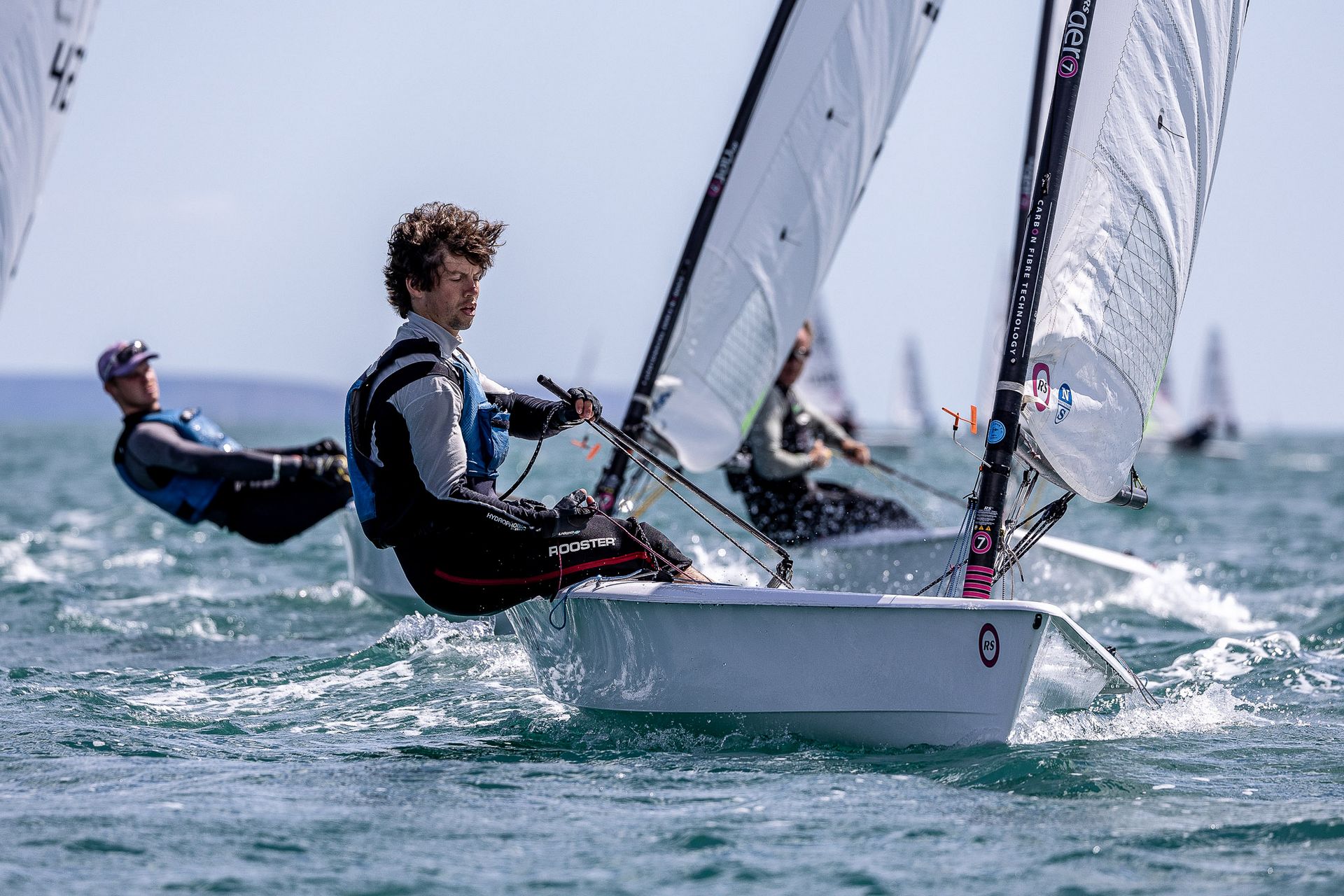In the RS community, we are passionate about helping others reach their full potential. This makes for fierce racing on the water and creates vibrant classes that keep inspiring sailors decades on.
We caught up with Greg Bartlett, who after a lot of dedication, won the RS Aero European Championship in 2019. We wanted to know his RS Aero specific tips for those aspiring to come up the ranks.
Here’s what he had to say.
- It seems simple, but one of the most significant factors to my speed was when I started listening to my unofficial sailing coach and fleet legend, Peter Barton. I started applying much more kicker. With two full-length battens, the RS Aero sail is naturally quite full. So it would be best if you had plenty of kicker (more than you think) since horizontal creases are speed creases. When they’re gone, it means you have enough kicker on! I avoid hooking the leech and properly flatten off the sail when it is windy (or very light to a certain extent). I have the adjustable battens as loose as they can; I still had enough power, even being a heavier sailor and can use more kicker without stalling the rig. When flattening off the sail with plenty of kicker, a decent amount of outhaul needs to be off (approximately 10-15cm from the boom at the centre of the foot of the sail).
- Again also simple, keep the boat flat. Much flatter than you think, what you may think is 5 or 10 degrees leeward heel usually is double that, flat = fast. This will vary in different sea states, but flat water = flat boat
- HIKE!!! Have a good set of hikers (although not essential with the ergonomically curved side of the aero). Training with a hiking bench (short intervals at max hike) for light winds to maintain momentum, squatting with weights, cycling etc., are all great exercises for building hiking fitness.
- When wavy and breezy, put your weight back. Another great tip from the mighty Peter Barton: put your weight back on the sea or a vast river where the wind is 18knts or more! Hiking underneath the RS Aero logo rather than ahead also helped me jump in speed when windy. It’s straightforward if the waves are coming over the bow upwind, get your weight back.
- Going downwind, adjust your kicker. You can judge effectiveness by stability. If the boat feels stable, you likely have too much kicker on; alternatively, if the boat feels like it wants to death roll, you don’t have enough. A personal judgement has to be made. The sail is pretty full downwind, so you can bring outhaul in so it’s fairly close to the boom (this means it’s a better shape for running by the lee). Transitions are an art form that gets better with practise in waves; having the kicker set right will help you transition best without using the rudder (body weight and sheet to steer in waves rather than the rudder, as I’m sure you’re all aware of).
So, there you have it! Some top tips from the awesome Greg Bartlett. If you have any of your own that you want to share with the RS community head to the RS Aero Class Association website and get involved on their forums or share them on our social media!
Share this!














